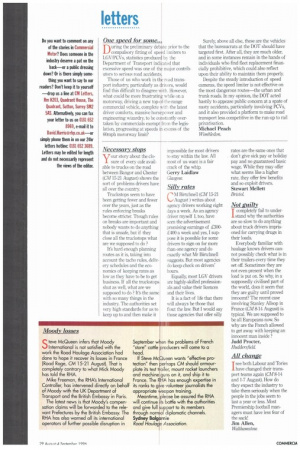One speed for some-,
Page 31

If you've noticed an error in this article please click here to report it so we can fix it.
uring the preliminary debate prior to the ,11 compulsory fitting of speed limiters to I.,GV/PCVs, statistics produced by the Department of Transport indicated that excessive speed was one of the major contributors to serious road accidents.
Those of us who work in the road transport industry, particularly as drivers, would find this difficult to disagree with, However, what could be more frustrating while on a motorway, driving a new top-of-the-range commercial vehicle, complete with the latest driver comforts, massive horsepower and engineering wizardry, to be constantly overtaken by commercials exempt from the legislation, progressing at speeds in excess of the 60mph motorway limit?
Surely, above all else, these are the vehicles that the bureaucrats at the DOT should have targeted first. After all, they are much older, and in some instances remain in the hands of individuals who find fleet replacement financially prohibitive, which could also reflect upon their ability to maintain them properly.
Despite the steady introduction of speed cameras, the speed limiter is not effective on the most dangerous routes—the urban and trunk roads. In my opinion, the DOT acted hastily to appease public concern at a spate of nasty accidents, particularly involving PCVs, and it also provided a platform to make road transport less competitive in the run-up to rail privatisation. Michael Peach Wimbledon.








































































































